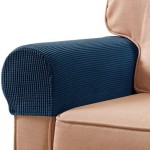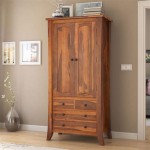How to Create an Indoor Worm Farm
An indoor worm farm is a fantastic way to recycle food scraps, reduce your environmental impact, and produce nutrient-rich compost for your plants. Creating one is surprisingly easy and can be a fun and rewarding experience.
Here are the essential aspects of creating an indoor worm farm:
1. Gather Your Materials
You'll need a suitable container, bedding for the worms, red wiggler worms, and food scraps.
For the container, you can use a plastic storage bin, a wooden crate, or even a cardboard box. Just make sure it has drainage holes and a lid to keep the worms in.
For bedding, shredded newspaper, cardboard, or coconut coir all work well. Avoid using glossy paper, as it can harm worms.
Red wiggler worms are the best choice for vermicomposting. They're efficient composters, and they can handle a wide range of food scraps.
Finally, you'll need food scraps. Avoid meat, dairy, or oily foods, as these can attract pests and create odors.
2. Set Up the Bin
Add a layer of bedding about 6 inches deep to the bottom of the container. Add the worms and food scraps and then cover them with another layer of bedding.
Keep the bin in a cool, dark place. Worms are sensitive to heat and light, so avoid placing the bin in direct sunlight or near a heat source.
The ideal temperature for worms is between 55-75 degrees Fahrenheit. If your home is too cold, you may need to use a heat mat to keep the bin warm.
3. Feed the Worms
Feed the worms regularly, but don't overfeed them. A good rule of thumb is to feed them about 1 pound of food scraps per 1,000 worms per week.
Bury the food scraps in the bedding. This will help to prevent odors and pests.
Avoid feeding the worms too much at once, as this can lead to the bin becoming too acidic and killing the worms.
4. Harvest the Castings
The castings (worm poop) are the nutrient-rich compost that you'll be using to fertilize your plants.
To harvest the castings, simply remove the top layer of bedding and scoop out the castings from the bottom.
You can use the castings to fertilize your plants immediately, or you can store them in a sealed container for later use.
Creating an indoor worm farm is a simple and rewarding way to recycle food scraps, reduce your environmental impact, and produce nutrient-rich compost for your plants. With a little care and attention, your worm farm will thrive and provide you with years of composting joy.

Diy Worm Composting Bin How To Do It Right Uncle Jims Farm

Build Your Own Indoor Worm Farm Finegardening

How To Make A Worm Compost Bin The And Easy Way

How To Make A Worm Farm With Pictures Wikihow

Building A Stackable Diy Worm Farm For 30
:max_bytes(150000):strip_icc()/vermicomposting-setting-up-a-worm-bin-2539503-hero-940852459d904283b553e44f156c102c.jpg?strip=all)
How To Start A Worm Bin And Vermicomposting

Liquid Worm Juice Superfood For Organic Gardens Growing A Greener World

How To Make A Worm Farm With Pictures Wikihow

Diy Worm Farm For 20 Stackable Bins Small Spaces Ers

How To Make A Worm Composting Bin Quick Simple And Inexpensive Gardening








